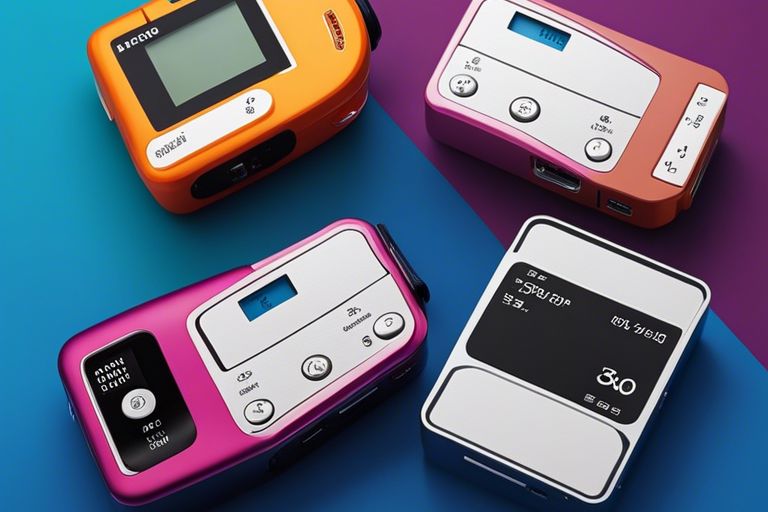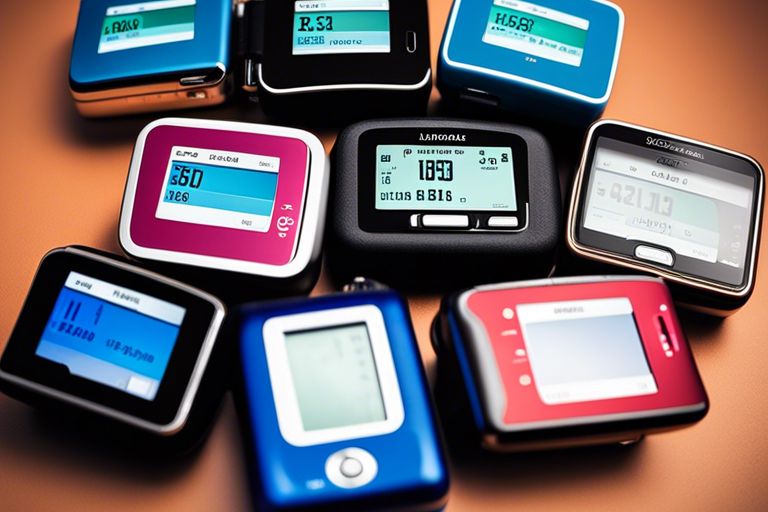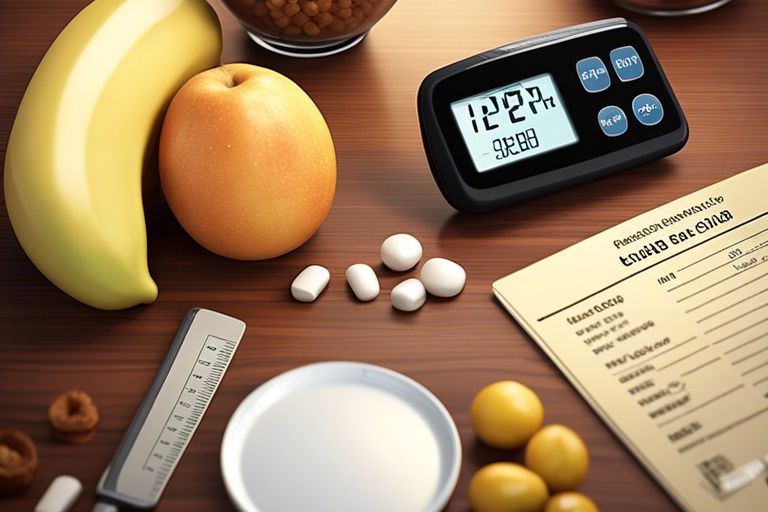Managing Type 1 Diabetes poses unique challenges, especially for young individuals balancing school responsibilities and social interactions. From monitoring blood sugar levels during classes to navigating peer pressure at social events, staying on top of diabetes care while juggling academics and social life requires careful planning and ongoing vigilance. In this blog post, we will explore practical tips and strategies to help those with Type 1 Diabetes navigate the complexities of school and social settings with confidence and ease.
Key Takeaways:
- Regular Monitoring: It is vital for students with type 1 diabetes to regularly monitor their blood sugar levels throughout the day to maintain control and make necessary adjustments.
- Communication is Key: Effective communication with teachers, friends, and school staff regarding their condition can help ensure support and understanding in managing their diabetes at school.
- Emergency Preparedness: Students should have an emergency plan in place at school, including access to glucose tablets or a snack in case of low blood sugar, and ensuring they are wearing a medical alert identification.
- Healthy Eating Habits: Encouraging balanced and regular meals, with consideration of carbohydrate intake, can help in managing blood sugar levels and overall well-being at school.
- Physical Activity Management: Planning for physical activities at school by adjusting insulin dosage or having snacks available to prevent low blood sugar levels during exercise is important for students with type 1 diabetes.
Understanding Type 1 Diabetes
What is Type 1 Diabetes?
Type 1 diabetes is a chronic condition where the pancreas produces little or no insulin. Insulin is a hormone that helps glucose from food enter your cells to be used for energy. Without enough insulin, glucose builds up in the blood, leading to high blood sugar levels.
Managing Blood Sugar Levels
Managing blood sugar levels is crucial for individuals with type 1 diabetes to prevent complications. This involves monitoring blood sugar levels regularly, counting carbohydrates, taking insulin injections or using an insulin pump, and leading a healthy lifestyle through balanced diet and regular exercise.
It is crucial for individuals with type 1 diabetes to work closely with healthcare professionals to create a personalised diabetes management plan. This plan may include adjusting insulin doses based on blood sugar levels, carb intake, and physical activity, as well as learning how to recognise and treat high or low blood sugar levels promptly.
School Life with Type 1 Diabetes
Communicating with School Staff and Peers
Effective communication with school staff and peers is crucial in managing type 1 diabetes at school. Make sure to educate key personnel about the condition, symptoms, and necessary actions. Encourage openness and understanding among classmates to create a supportive environment.
Managing Diabetes During School Hours
Managing diabetes during school hours involves careful planning and monitoring. Ensure that the school is aware of your child’s personalised diabetes management plan, including insulin administration, blood sugar monitoring, and meal times. Regular communication with the school nurse or designated staff member is imperative to address any fluctuations in blood sugar levels promptly.
Social Life and Type 1 Diabetes
Participating in Activities and Sports
Managing type 1 diabetes while participating in activities and sports requires careful planning and consistent monitoring. It is important to check blood sugar levels before, during, and after physical activity, as exercise can either raise or lower blood sugar levels. Always carry fast-acting carbohydrates to treat low blood sugar episodes, and communicate with coaches or teammates about your condition so they can assist if needed.
Dining Out and Sleepovers
Dining out and sleepovers can present challenges for individuals living with type 1 diabetes, but with the right preparation, they can still enjoy these social activities. When dining out, opt for healthier options and be mindful of portion sizes. Inform the restaurant staff about your condition, and don’t hesitate to ask about nutritional information. For sleepovers, make sure to pack all necessary diabetes supplies, inform the host about your condition, and set alarms to check blood sugar levels throughout the night.
Managing type 1 diabetes in social settings like dining out and sleepovers requires assertiveness and proactive planning. By staying informed about food choices, communicating your needs to others, and staying vigilant with blood sugar monitoring, individuals with diabetes can confidently navigate these social situations while prioritising their health.
Coping Strategies and Support Networks
Developing a Support System
When managing Type 1 Diabetes, having a strong support system in place is crucial. This can include family members, friends, healthcare professionals, and even online communities. Surrounding yourself with people who understand your condition and are willing to offer support can make a significant difference in your journey.
Mental Health and Coping Mechanisms
Living with Type 1 Diabetes can be emotionally challenging at times, which is why prioritising your mental health is necessary. Coping mechanisms such as mindfulness, regular physical activity, and seeking professional help when needed can help you navigate the emotional aspects of the condition.
It’s important to acknowledge that managing Type 1 Diabetes is not just about the physical aspect but also about the emotional toll it can take. By recognising the impact of the condition on your mental health and adopting healthy coping mechanisms, you can build resilience and improve your overall well-being.
Navigating School and Social Life with Type 1 Diabetes
Managing Type 1 diabetes while juggling school work and social activities can be challenging, but with proper planning and support, it is achievable. Balancing blood sugar levels, medication schedules, and meal planning is crucial in ensuring optimal health and well-being. Educating teachers, friends, and family about the condition can create a supportive environment where you can thrive. It’s imperative to communicate your needs, listen to your body, and not let diabetes hold you back from pursuing your goals and enjoying social experiences. With dedication, self-care, and a positive attitude, you can successfully navigate school and social life while managing Type 1 diabetes.
FAQ
Q: What is Type 1 Diabetes?
A: Type 1 Diabetes is a chronic condition where the pancreas produces little or no insulin, leading to high blood sugar levels. It requires lifelong management through insulin injections or an insulin pump.
Q: How does Type 1 Diabetes affect school life?
A: Type 1 Diabetes can impact school life by requiring careful monitoring of blood sugar levels, insulin administration, and potential need for snacks or meals during the school day to maintain stable blood sugar levels.
Q: What are the challenges of managing Type 1 Diabetes at school?
A: Challenges include dealing with fluctuating blood sugar levels, potential stigma or misunderstanding from peers, navigating meal times and physical activities, and ensuring access to necessary supplies like insulin and glucose monitors.
Q: How can schools support students with Type 1 Diabetes?
A: Schools can support students by creating a personalised care plan in collaboration with parents, educating staff on diabetes management, allowing discreet blood sugar checks and insulin administration, providing easy access to water and restroom facilities, and fostering a supportive and inclusive environment.
Q: How can students balance social activities with managing Type 1 Diabetes?
A: Students can balance social activities by planning ahead, carrying necessary supplies like insulin, snacks, and glucose tablets, communicating with friends and peers about their condition, being aware of alcohol’s impact on blood sugar, and prioritising self-care while still participating in social events.




